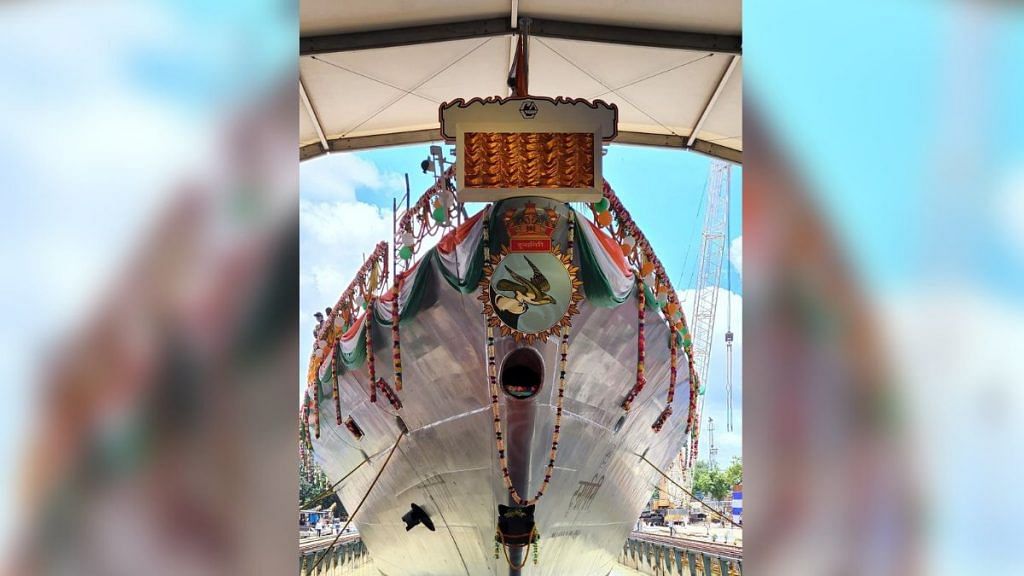New Delhi: Defence Minister Rajnath Singh on Friday launched the fourth and latest ship of the Indian Navy’s 17A Frigates, the Dunagiri.
The ship was sent forth into the Hooghly River at Kolkata’s Garden Reach Shipbuilders and Engineers Limited, in the presence of Chief of Naval Staff R. Hari Kumar and other senior officials from the Defence Ministry and the Navy.
Raksha Mantri Shri @rajnathsingh launched Y- 3023 #Dunagiri, Project 17A frigate built by @OfficialGRSE in Kolkata, today in the presence of the #CNS Adm R Hari Kumar & other senior officers from #IndianNavy and #MoD.
Read in details: https://t.co/28PKPqQ3Pd pic.twitter.com/3sgTIa4qAj— A. Bharat Bhushan Babu (@SpokespersonMoD) July 15, 2022
Designed in-house by Indian Navy’s Directorate of Naval Design (DND), the Project 17A Frigates form part of the nationwide objective to achieve a self-reliant India.
The Navy’s DND has previously spearheaded the design of several classes of indigenous warships. Seventy-five percent of the orders for equipment and system are also being placed to indigenous firms, sources in the defence establishment told ThePrint.
The three preceding ships of Project 17A Frigates had been launched in 2019, 2020 and May 2022 respectively.
“Christened after a mountain range in the state of Uttarakhand, Dunagiri is the fourth ship of P17A Frigates. These are follow-on of the P17 Frigates (Shivalik Class) with improved stealth features, advanced weapons and sensors and platform management systems. Dunagiri is the reincarnation of the erstwhile ‘Dunagiri’, the Leander Class ASW Frigate, which in her 33 years of service from 5 May 1977 to 20 October 2010, had witnessed various challenging operations and multinational exercises. The launch of the fourth ship within such a short span is a testimony to the impetus provided towards self-reliant shipbuilding with a focused approach,” the sources said.
The shipbuilding process
While the launch is a crucial step for the project, it is part of a protracted process that goes into shipbuilding before deployment.
A ship is only considered launched when it touches a water body for the first time, with the primary phases of construction, manufacturing and welding taking place prior to launch on a dry dock.
The hull is the most crucial component to be completed on the dry dock as it constitutes the ship’s framework and is underwater once launched. “(The hull) is the watertight enclosure of the ship, which protects the cargo, machinery, and accommodation spaces of the ship from the weather, flooding, and structural damage,” Marine Insight explains.
Once the ship is launched, the hull and its core components are underwater and the next crucial step is outfitting, which involves the remainder of the ship’s construction, interior works and the installation of machinery and radar systems, among other parts that are above water.
The trial period of a ship only begins once the outfitting work concludes, and involves testing the engine’s endurance, the ship’s steering, turning circle and navigation capabilities.
In the case of Project 17A’s Dunagiri, a defence source told ThePrint that it would take “at least another year” for trials to commence on it. “Integration and housing of machinery will now start inside the ship (as part of the outfitting process),” the source added.
Also read: India’s Eastern Seaboard gets its first naval air squadron INAS 324
